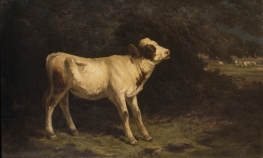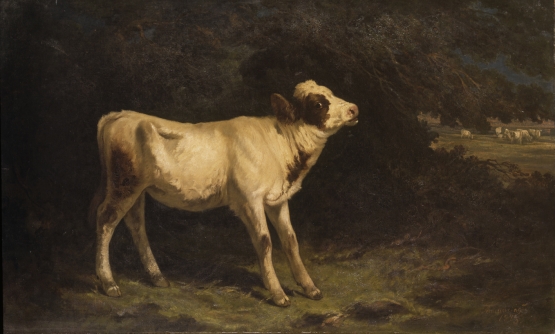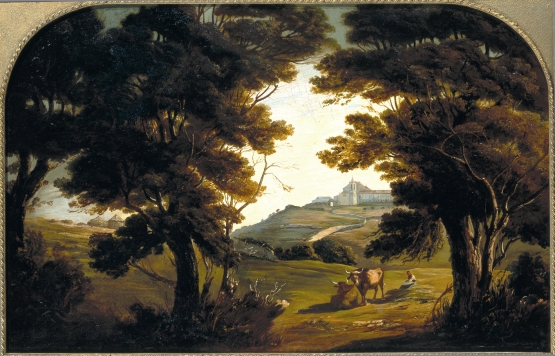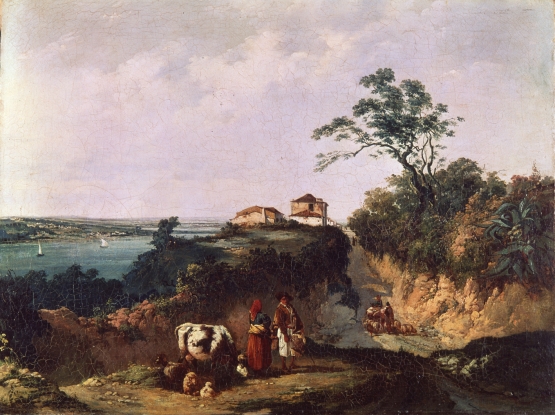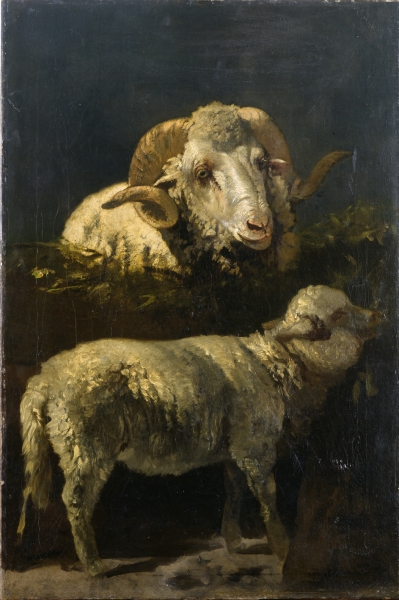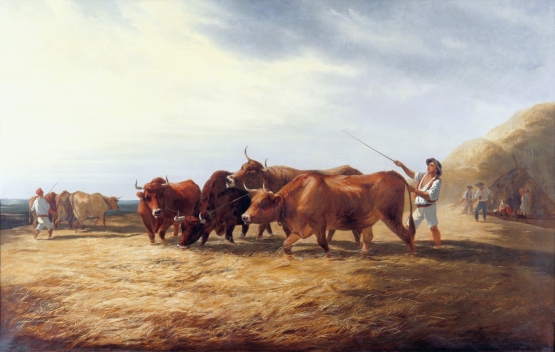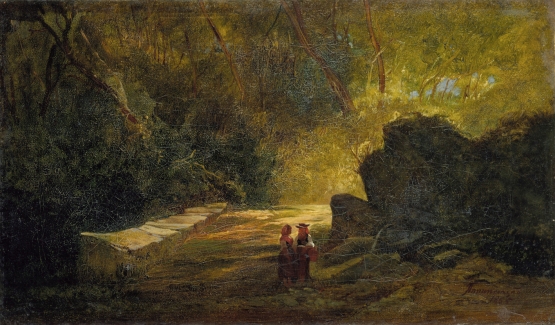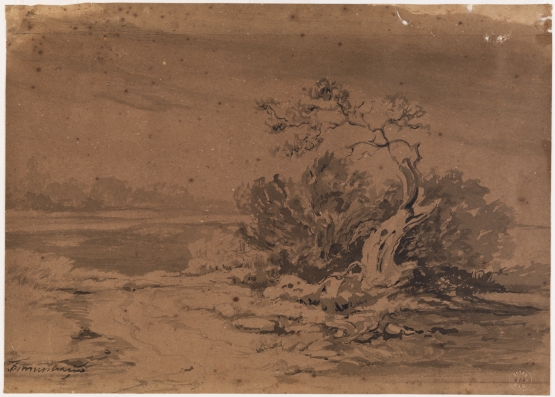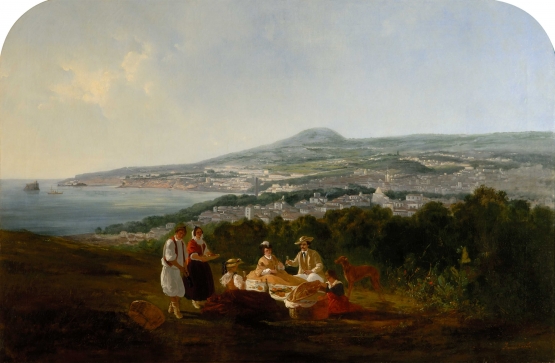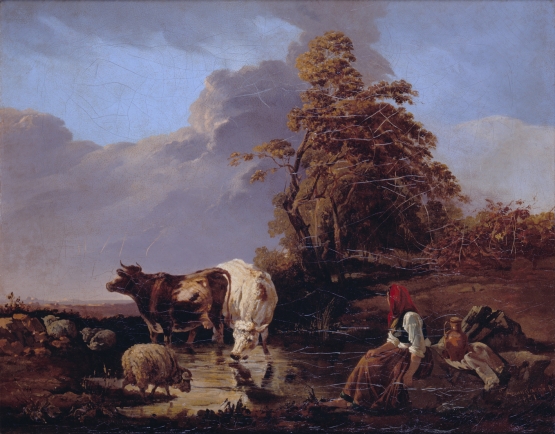THE POWER OF THE IMAGE. THE LANDSCAPE OF TOMÁS DA ANUNCIAÇÃO (Lisbon, 1818-1879)
On the bicentenary of the painter’s birth, the MNAC will mark 26 October with a display of nine works by the artist in this section. One of the featured works, Piquenique [Picnic], commissioned by the Count of Carvalhal in 1865, now part of the collection of the Quinta das Cruzes Museum and practically never seen before in Lisbon, stands out for the gaiety of the colours, offering a broad view of Funchal Bay possibly based on a photograph.
The artist developed an interest in landscape painting while still a student at the Academy of Fine Arts, to which he was admitted in 1837, and which he left for a short period in protest against the academic teaching style. Along with a group of young students, and perhaps because he was the oldest among them, Anunciação rebelled and stood up against the teachers, in a peaceful revolution of methods and practices. It was important to paint ‘from nature’, to record features of the landscape and to discover typical regional characteristics and traditional customs, an idea inspired by Almeida Garrett’s Viagens na minha terra [Travels in My Homeland] from 1846. He quickly came to be considered the group's leader – its master – and was portrayed as such in the first group painting of the artists in 1855, Os cinco artistas em Sintra [Five Artists in Sintra], by João Cristino da Silva, a fellow student at the Academy.
The importance he attributed to drawing – the detailed representation of reality on paper – as a preparatory study for painting was decisive in his production and was a fundamental element gained in his introductory classes in architecture at the Arsenal’s Sala do Risco and in draughtsmanship at the Natural History Museum. Starting out as a rebellious student of the Academy, from 1852 Anunciação went on to advocate the painting of landscapes, customs and animals, and was considered the leader of the new romantic generation made up of Francisco Metrass, João Cristino da Silva, José Rodrigues and Victor Bastos, a group attracted to painting ‘d'après nature’, such as in the case of Na eira [On the Threshing Floor] and Picnic, probably produced with reference to photographs –a novel technique at the time – and O vitelo [The Calf], from 1873.
The period was strongly marked by his artistic production , with his fascination for the painting of landscapes and customs persisting in modern art and in the works and teachings of Silva Porto, who took over from Anunciação as a teacher at the Academy of Fine Arts following his death.
M.A.S.

